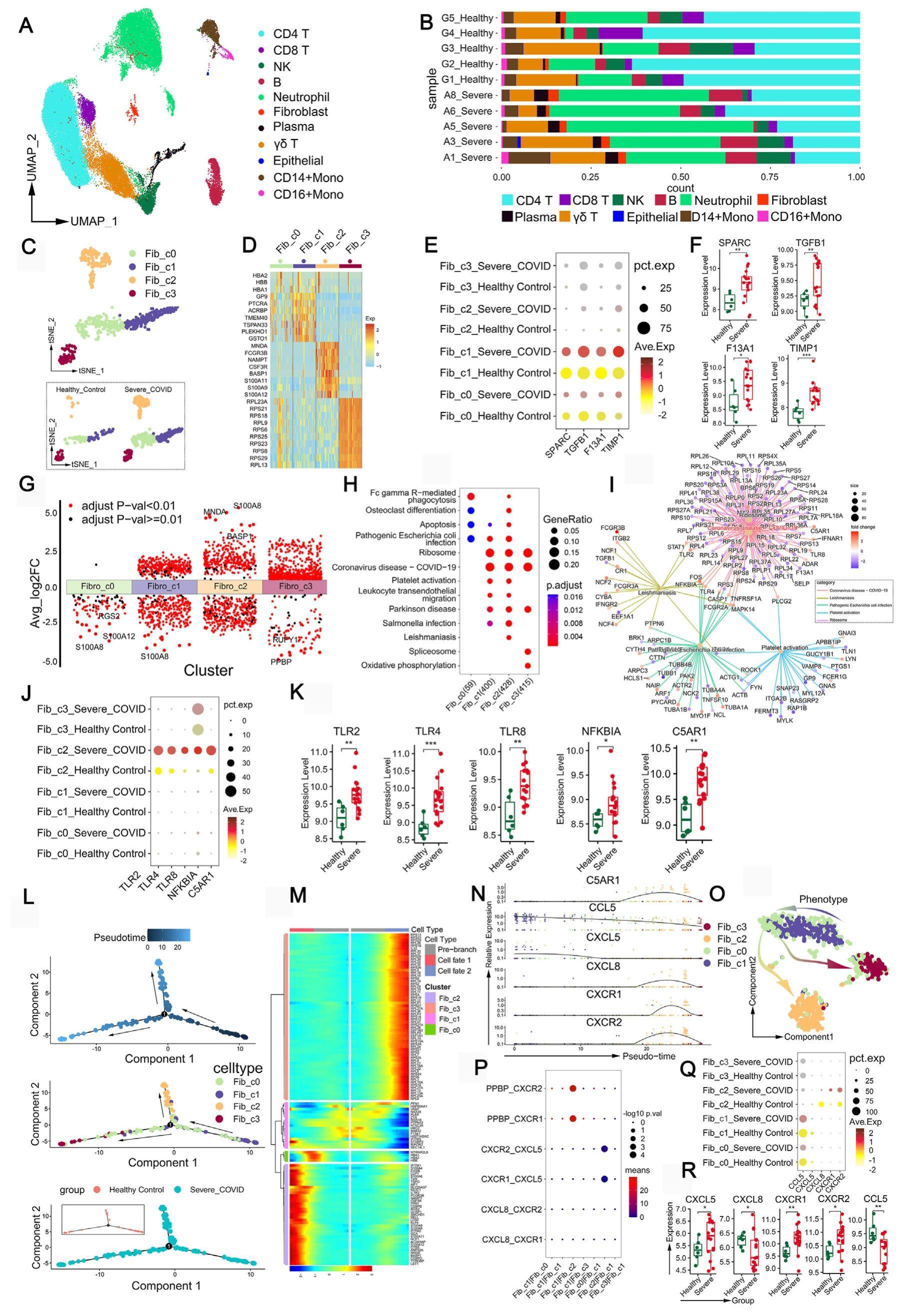
Circulating fibroblasts present neutrophil-like features in severe COVID-19 cases revealed by single-cell landscape analyses


Severe acute respiratory syndrome coronavirus-2 (SARS-CoV-2), which causes coronavirus disease 2019 (COVID-19) and initially infects epithelial cells of the upper respiratory tract, has recently caused a global health emergency and is still a potential threat to humans. Multiple studies have suggested alterations in the immune system, including excessive neutrophil activation and lymphopenia, and excessive inflammatory responses as the key mechanisms forsevere symptoms. However, which cell types contribute to excessive inflammation remains to be explored. Further analysis of human blood immune cells provides insights into the coordinated response to SARS-CoV-2 infections and is a significant task for restraining the virus and controlling disease progression. In this study, we reanalyzed the single-cell sequencing (scRNA-seq) dataset GSE157789 uploaded by Sinha S et al in the GEO database, and the results were validated by analyzing the RNA-seq dataset GSE171110. The results indicated increased neutrophils and plasma cells but reduced CD8 T cells. More importantly, we identified a unique population of fibroblasts enriched in severe COVID-19. The fibroblast subcluster showed potential neutrophil-like function and might be another significant cell population participating in uncontrolled inflammation in COVID-19.
